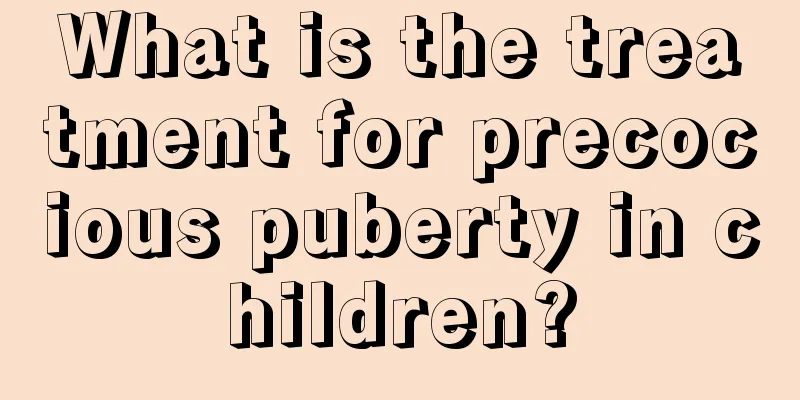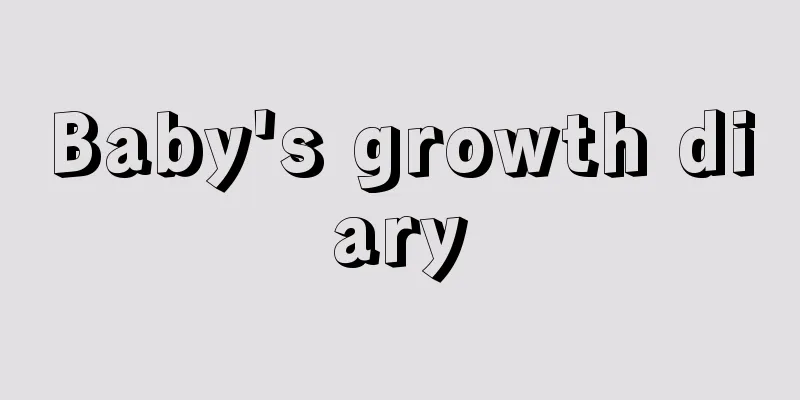What is the cause of the child's fever and cramps?

|
Fever is a common disease in children. The general symptoms of fever are high body temperature but cold hands and feet, obvious loss of appetite, and very lethargic spirit. In addition to these symptoms, another common manifestation is cramps, which are manifested as involuntary twitching of the whole body and usually last for a short time. So what exactly is going on when children have fever and cramps? (1) Infectious convulsions (febrile convulsions) 1. Intracranial diseases and viral infections such as viral encephalitis and Japanese encephalitis. Bacterial infections such as purulent meningitis, tuberculous meningitis, brain abscess, and venous sinus thrombosis. Fungal infections such as cryptococcal meningitis. Parasitic infections such as cerebral cysticercosis, cerebral malaria, cerebral schistosomiasis, cerebral paragonimiasis, and toxoplasmosis. 2. Extracranial diseases include high fever convulsions, toxic encephalopathy (severe pneumonia, whooping cough, toxic dysentery, sepsis as primary diseases), tetanus, etc. (ii) Non-infectious convulsions (afebrile convulsions) 1. Intracranial diseases and craniocerebral injuries such as birth injuries, brain trauma, neonatal asphyxia, and intracranial hemorrhage. Abnormal brain development such as congenital hydrocephalus, cerebrovascular malformations, macrocephaly (microcephaly), cerebral palsy and neurocutaneous syndrome. Intracranial space-occupying diseases such as brain tumors and brain cysts. Epileptic syndromes such as grand mal seizures and infantile spasms. Brain degenerative diseases such as demyelinating encephalopathy and macular degeneration. 2. Extracranial diseases Metabolic diseases such as hypocalcemia, hypoglycemia, hypomagnesemia, hyponatremia, hypernatremia, vitamin B1 or B6 deficiency, etc. Genetic metabolic diseases such as glycogen storage disease, galactosemia, phenylketonuria, hepatolenticular degeneration, and mucopolysaccharidosis. Systemic diseases such as hypertensive encephalopathy, uremia, heart rhythm disorders, severe anemia, food, drug or pesticide poisoning, etc. Parents should not panic if their children have convulsions during a fever. They should conduct timely symptomatic examinations to find out the cause, and then relieve the discomfort through treatment. During the treatment process, parents should also pay attention to the fact that the space where the child lives should not be too closed. Opening the windows appropriately for ventilation and allowing air to circulate in the room will also be helpful for the child's condition. |
<<: How do children train their abdominal muscles?
>>: What is the cause of a child's high fever convulsion?
Recommend
What causes urticaria in children due to skin allergies?
Children's skin is very delicate and sensitiv...
Is it normal for a two month old baby to have a temperature of 373?
We all know that the normal body temperature of a...
Rehabilitation training methods for children with cerebral palsy
Many people are familiar with cerebral palsy. Thi...
Why do newborns sleep restlessly during the day?
Newborns are babies who have just been born. They...
What are the dangers of general anesthesia for children?
When performing surgery, in order to avoid causin...
How to define children's fear psychology and what are the dangers?
Some children get scared of animals like dogs and...
Treatment of enlarged adenoids in children
It is said that children are the hope of the moth...
What causes sinusitis and headache in babies?
Children nowadays are the treasures of the family...
2 months old baby
The physical development and many aspects of a tw...
What to do if a 1.5-year-old baby has a high fever and convulsions
Many babies will get sick, which is not only rela...
What are the characteristics of mentally retarded children?
Some children are healthy after birth, but becaus...
What causes diarrhea in children?
Children at home are the apple of their parents’ ...
What is the reason for white spots on children's faces?
Our parents care very much about their children&#...
11 simple ways to make your baby smarter
1. Talk to your baby more. 2. Touch your baby mor...
The harm of low-grade fever in babies
The phenomenon of a baby's persistent low-gra...









